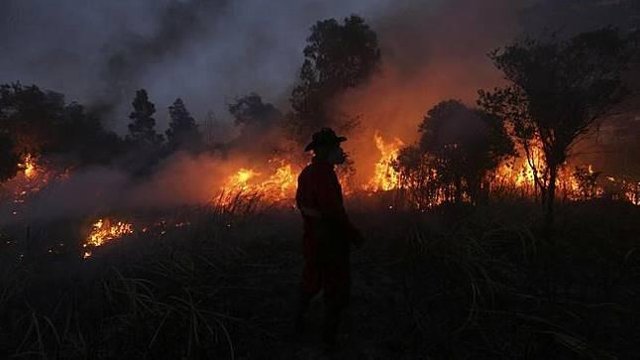Discovery of How to Predict Fire and Peat Land Fires

Forests are the lungs of the world because forests play an important role in human life both as the main source of oxygen producers, regulating the balance of ecosystems and habitats for many living things. In the event of a forest fire of course bring adverse effects for humans, ecosystems and for the environment.
The impacts of forest fires include loss of habitat for living creatures, environmental ecosystem damage, reduced oxygen supply in nature, polluted air, disruption of aircraft navigation systems and causing global warming due to the release of CO2 substances into the combustion atmosphere.
Researchers from the Bogor Institute of Agriculture (IPB) have found that sequential pattern mining in hotspot data can be an indicator of forest and peat fires in Kalimantan. They are Lailan Syaufina (Department of Silviculture, Faculty of Forestry), Imas Sukaesih Sitanggang, Rina Trismingsih, Husnul Khotimah (Department of Computer Science, FMIPA) IPB.
Imas said hot spots are one indicator of forest and land fires in Indonesia. Not all hotspots are strong indicators of forest and land fi res. The incidence of hot spots successively at least in 3 days at a location can be a strong indicator of forest and land fires, especially on peatlands.
Spatio-temporal data mining approach can be used to get the pattern of hotspots sequence. "This research succeeded in getting the pattern of sequence of hot spot appearance in peatlands on Borneo island using sequential pattern mining approach by applying the SPADE (Sequential Pattern Discovery using Equivalence classes) algorithm," he said.
The hotspots sequence pattern generated at the minimum support value of 0.1% is 175 sequences in Kalimantan 2014 and 295 sequences in Kalimantan 2015. The hotspot sequences are then combined with weather data to obtain an association pattern between the occurrence of hotspot sequences with weather data by the approach of the association rule mining.
Sequence patterns of hot spots appear in Kalimantan 2014 occur in weather conditions with an average humidity between 77.7-82.5%, average temperatures between 27.00-27.69 ° C, and rainfall 0. While in 2015 the pattern occurs in weather conditions with an average humidity between 65.8-72.1% and 78.6-84.9%, average temperature between 27.38-29.32 ° C, and rainfall between 0.0-0.9 mm.
"The results of this study have significance in the prevention of peatland fires to minimize the occurrence of fires and their effects in the future,"
Follow @cekblack
My friend, a kind reminder here.
#cn tag is stand for Chinese.
However, no Chinese was detected in this article.
Please use wisely for your tag,thank you